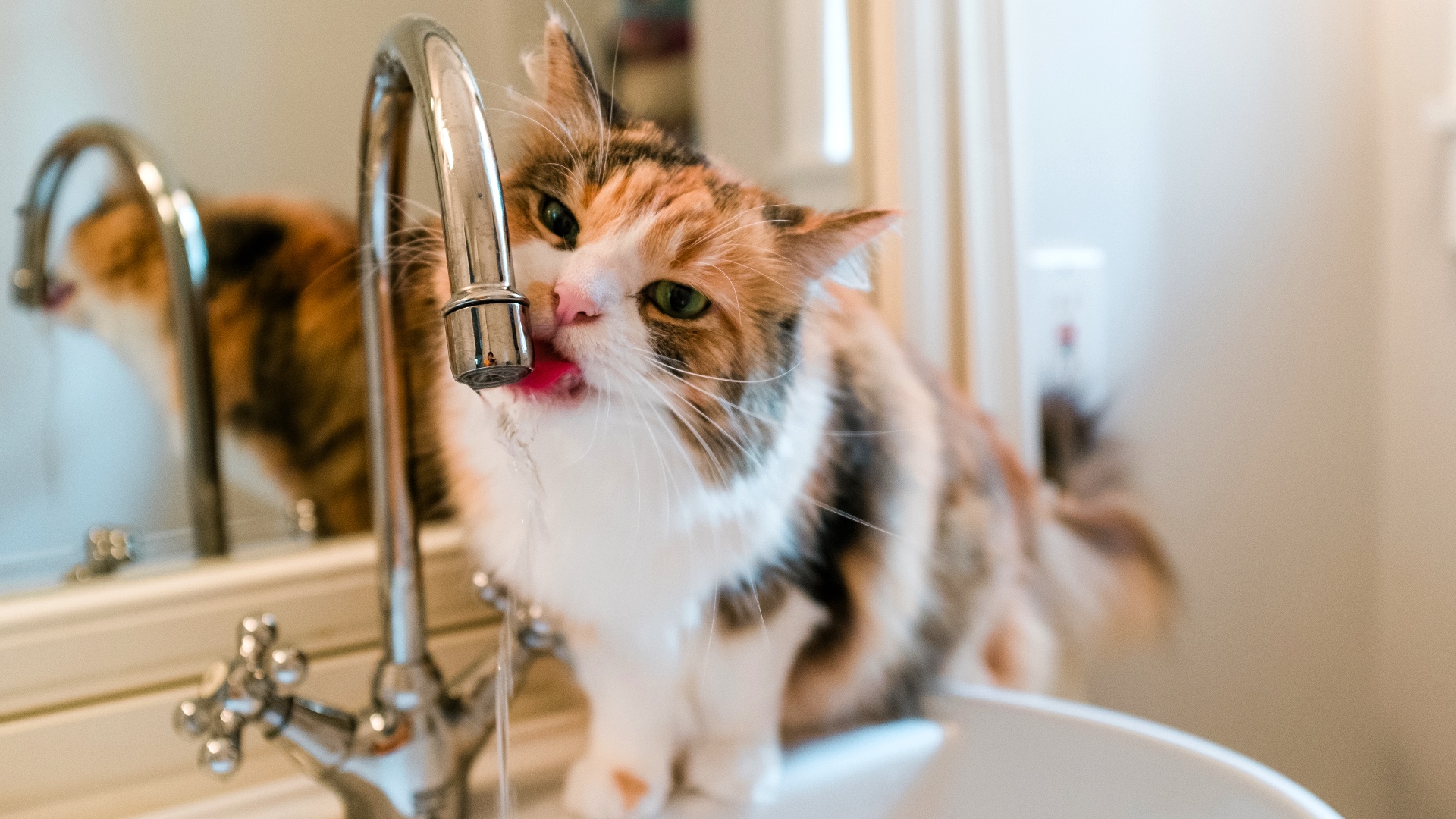10 charming facts about the calico cat
The calico cat is famed for its unique colors, sassy attitude and good fortune. Here is everything you need to know about this mysterious feline

When it comes to fascinating felines, the calico cat is certainly one of the most revered. Described as the world’s most colorful cat due to their striking, tricolor coats, and interesting genetics, there is much more to the calico cat than meets the eye.
What’s more, they were made the official state cat of Maryland, United States, in 2001. This is down to the fact they share identical feather colors of the Baltimore Oriole, which is the Maryland state bird. You can’t get more honorary than that!
They are also known for their sassy attitudes and big personalities, so if you find yourself with one of these kitties, they’ll need plenty of exciting playtimes with the best cat toys to banish their boredom!
But aside from their unique fur and bold personalities, calico cats do carry an air of mystery about them. Read on to discover 10 intriguing facts about the fabulous calico cat.
Why are calico cats unique?
Most people are not aware that calico cats are not even a type of breed, like the tuxedo cat. In fact, calico cats get their names from the coloration and pattern of their coats. What makes them so unique is they are a domestic cat with a genetic code that determines color variations. Scientifically known as “X chromosome inactivation”, a genetic code found on the X chromosome makes their distinct black and orange patches on their fur.
What are the three types of calico cat colors?
Typically, a standard calico cat has beautiful tricolor hues of orange, black, and white. Cats with the same white fur with patches of charcoal grey, cream and light orange are known as a dilute calico. While a caliby, a mixture of a tabby cat and calico, has the same color variation but with additional, signature tabby stripes.
Female calico cats rule (and male calico cats are rare!)
Interestingly, 99.9% of calico cats are female as a result of this genetic code. Coat color is a sex-linked trait and occurs due to dominant and recessive genes that interact with X chromosomes. Female cats have two X chromosomes, while males have one X chromosome and one Y chromosome. Meaning male cats can only display either the black or orange gene and not both.
Get the best advice, tips and top tech for your beloved Pets
Why do male calico cats have health issues?
When a male calico cat is born, they have a 1 in 3,000 chance of being sterile due to a genetic condition called Klinefelter’s Syndrome. This abnormality is when an extra X chromosome is present alongside the Y chromosome. As a result, this can lead to serious health issues such as diabetes, joint pain and broken bones. In addition, they have a shorter lifespan than their female counterparts. However, this can be prevented with good nutrition in the best cat food and quality health care with the best pet insurance plans.
How long do calico cats live for?
Health issues aside, calico cats have a life span of 12-16 years, which is pretty average for a kitty.
Calico cats have big personalities and are sassy!

Calico cats are best known for their lively personalities and sassy attitudes. In fact, you’ll never know what you’ll get from these felines because it all depends on their mood! Such bold traits show up as independence and a high-maintenance nature similar to tortoiseshell cats. What’s more, they’ve been given the name ‘tortidude’ for that reason!
What is the difference between a calico cat and a tortoiseshell cat?
Surprisingly, calico cats are not the only felines with colorful coats! Tortoiseshell (Torties) and tabby cats are also known for their unique fur. But how can you tell the difference? Typically, a calico cat has three distinct colors of white, orange and black. Torties have marbled orange and black, with very little white coat. While the tabby cat has unique tabby stripes with strong ginger and black patches. What’s more, if you look closely, you’ll notice a distinct ‘M’ on their foreheads which calicos don’t have.
Calico cats have different names
In different cultures, the calico cat goes by various names. Ranging from ‘lapjeskat’ in the Netherlands, meaning “patched cat”, and ‘mi-ke’ in Japan, meaning “triple fur”.
They are considered to be good luck charms
Due to their rarity, the mysterious calico is regarded as a lucky charm in many countries. In fact, the famous Japanese Beckoning Cat (Maneki Neko) you’ll often see in entrances of restaurants or homes is modeled after a calico cat. This was declared an official symbol of fortune in the 1870s. Japanese fishermen also took calico cats with them onto ships to protect them from stormy weather and bad spirits. In the United States, the calico is often called ‘money cat’ to bring good luck.
…and a calico cat was once a celebrity
In 2007, a Japanese railway station faced closure due to a lack of budget. As a last resort, the town sent a calico cat to the station to greet passengers passing by. The cat became so famous that this caused a 17% increase in traffic, which saved the train station from closing down in the end!
Found this interesting? Learn about dilute calico cats next!
Cynthia Lawrence is freelance lifestyle journalist. Starting off her career in national magazines, she moved to digital and e-commerce publications. When she's not reviewing exciting products, she is obsessed with home interiors and her neighbour's cat!

